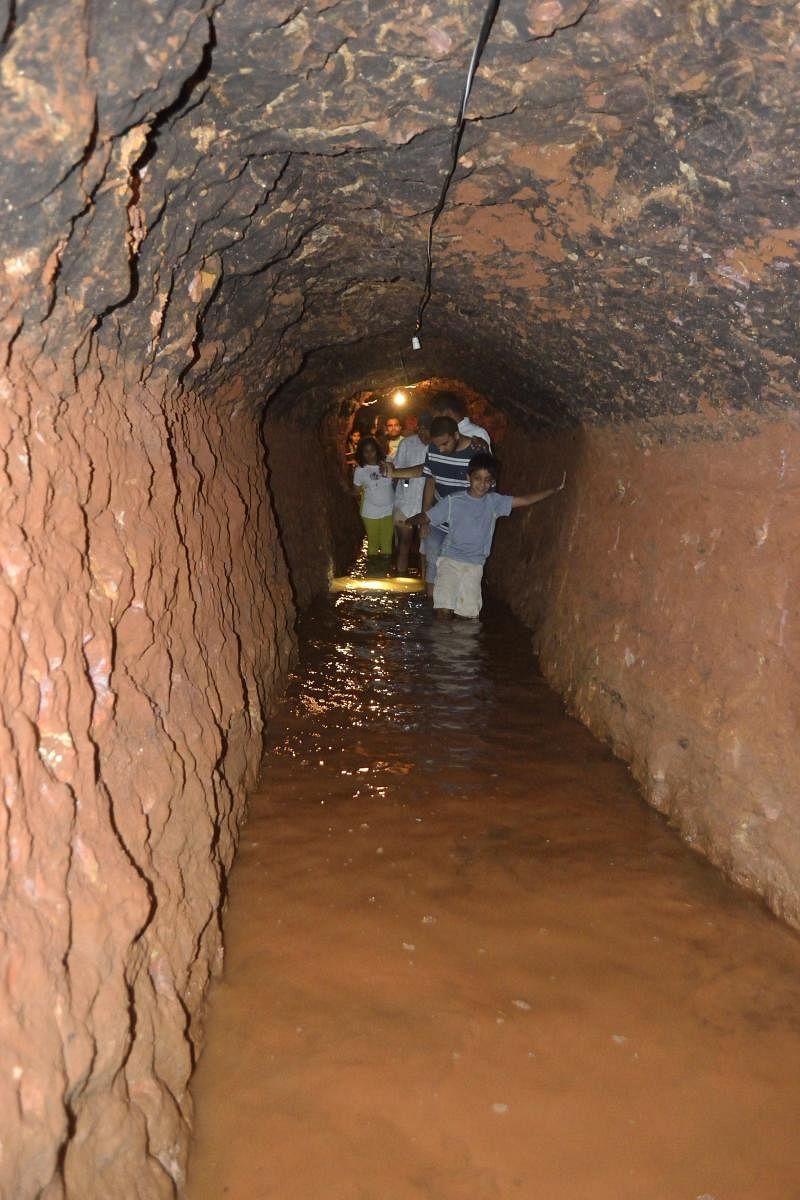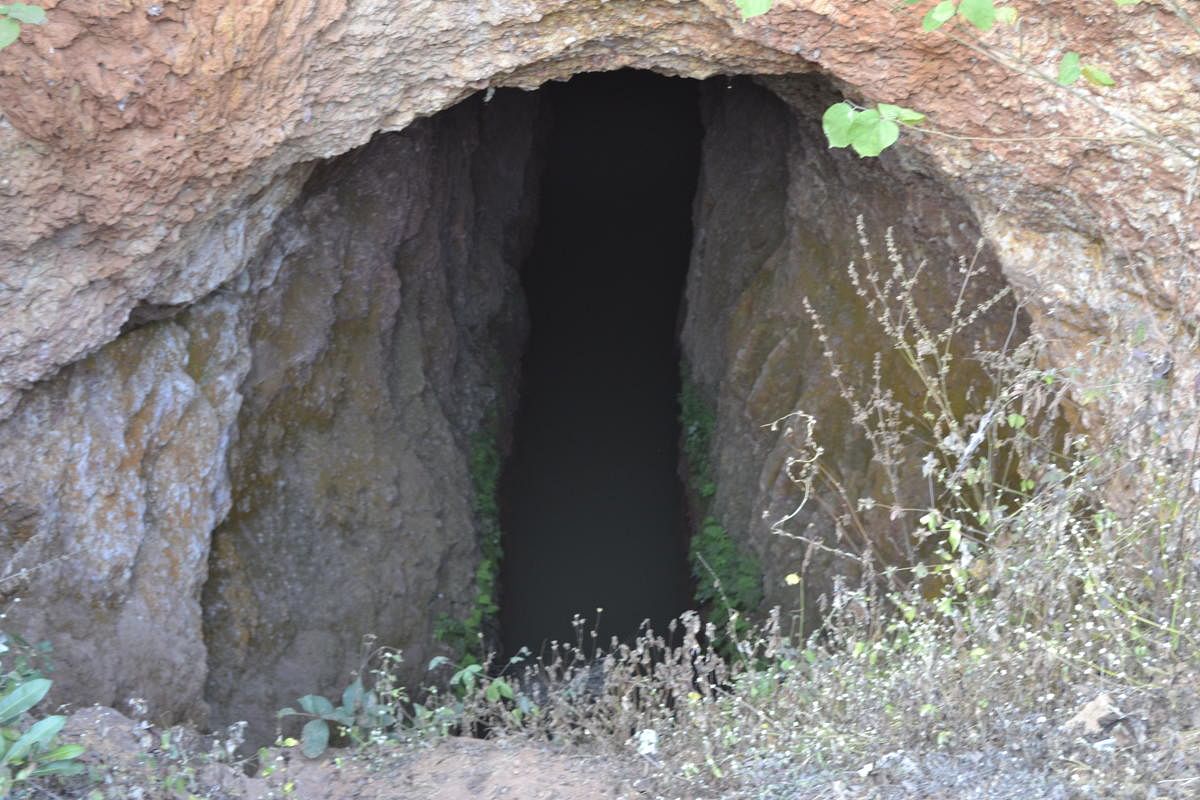
Talaparige: Community water in Tumakuru
Talaparige, which literally means ‘an underground fountain’ in Kannada, is a unique system of water conservation seen in Pavagada, Madhugiri, Sira and Koratagere taluks of Tumakuru.
To an extent, they also exist in Kolar, Chitradurga, Chikkaballapur and Ballari districts, apart from neighbouring Andhra Pradesh.
Talapariges are basically sweet water springs emerging naturally from the ground. They are found in and around the beds of rivers, lakes and even streams.
In areas with rocky substratum and hills, the rainwater that trickles into the ground does not percolate deep and instead, begins flowing horizontally under pressure. The water then oozes out at points where there is a layer of sandy (loose) soil.
To use this water for drinking, irrigation and other purposes, especially during summers, pits are dug to form small ponds and stone walls are built around it. The water is then distributed to the fields through small channels.
A few decades ago, when Talapariges were popular, farmers who took benefit from the structure came together and desilted it. Those who did not turn up for the desilting work had to pay a fine. In this way, Talapariges even played a major role in bringing the community together.
According to experts, Talapariges have existed for at least 2,000 years but remained undocumented.
According to Mallikarjuna Hosapalya, a water conservationist who has worked for the revival of Talapariges, Tumakuru district had around 2,000 Talapariges but the number has dropped to just 150 to 200 over the years. Sinking of excessive borewells came as a major threat to these traditional structures. The depletion of groundwater led to these Talapariges drying up.
Mallikarjuna, along with other water enthusiasts, began reviving them in Tumakuru district over a decade back. With the help of water experts, government and other agencies, they have brought around 300 Talapariges back to life today. “Of late, sand mining is posing a challenge to Talapariges and it is high time we protect them,” says Mallikarjuna.
***
Madakas: Water harvesting in the coast
Madakas (or Madagas) are traditional rainwater harvesting structures found mainly in Udupi and Dakshina Kannada districts in Karnataka and also in Kerala, where laterite soil is found. In this system, a geographically-strategic area located on a high terrain with slopes on three sides is chosen and a bund is constructed in the depression on the fourth side. The run off received from the catchment is naturally accumulated in a huge tank created through construction of the bund.
Traditionally, these man-made systems were seen as supplementary water supply that could irrigate the second crop of paddy. However, the Madaka played a greater role as they acted as a percolation tank and helped recharge the water table.
These Madakas would often dry up before summer but they kept the aquifers beneath rich and insulated the area from drought.
Though a mention of a Madaka can be seen in the copper inscription dating back to 1455, the system is believed to be much older. The Karnataka gazetteer of 1973 also mentions about six Madakas in the undivided Dakshina Kannada district.
According to water expert Shree Padre, it is difficult to list the number of Madakas that existed in the state but today, the number has definitely declined. “Over the years, people saw it as a water system exclusively meant for paddy-irrigation and with disappearing paddy fields in the coastal belt, the popularity of this system came down. But even to this day, Mangaluru and Udupi areas have hundreds of such Madakas. Udupi district has the highest number of Madakas now, some of which spread over an area of 20 acres,” he says.
Now, most of these systems are in a state of neglect. Though five to six Madakas in Udupi district desilted under the employment guarantee scheme have yielded good results, there are many others which have to be identified and rejuvenated.
***
Karez: Bidar's heritage system of water supply
Bidar city houses a magnificent historical system of underground water supply known as the Karez system. This system was introduced to India from Persia through the rulers of the Deccan Sultanate during the 15th century and it met all the water needs of a huge population, including agriculture.
Bidar has three Karez systems including the Jamna Mori, Shukla Teertha and the Naubad Karez.
The Jamna Mori was a highly secure water supply system which could quench the thirst of people even in case of an enemy attack. The Shukla Teertha, the longest system in the city, nurtured the lake inside the fort and provided water to areas around the fort. The Naubad Karez was developed to create a new settlement at Naubad on the outskirts of Bidar.
Scientifically, Karez is a sub-surface tunnel dug through laterite geology which cuts the water table for accumulation of water and has several vertical shafts (air vents). It runs from a higher to lower elevation so water can flow through gravitational force. Apart from the distribution of water from the mouth (opening) of the Karez, the scientifically-developed vents acted as wells for extraction of water and to do the maintenance works.
Similar Karez systems were found in Vijayapura and Belagavi districts too, where it was called Surang-Bawi. The Vijayapura system was a complex one developed during the Adil Shahi period and served as an extraordinary model for watershed management. However, over the centuries, the Karez system suffered a severe blow due to urbanisation, improper urban planning and lack of awareness among people about this ‘living heritage’.
The absence of a proper urban sewage system meant that sewage water and dumped garbage began polluting the underground water table, blocking the tunnels.
Fertilisers used in agriculture too made the water unfit for use. Borewells added the last nail to the coffin and the system became totally dysfunctional.
In 2012 - 13, Geographer, Govindan Kutty from Palakkad in Kerala re-discovered, mapped and carried out hydrogeological studies of the Naubad Karez Landscape. He identified the potential groundwater zones with respect to that system and in 2015, ensured its restoration with the help of other experts, local NGOs like YuVAA and government departments. In 2016, the Karez began flowing again after the area received good rain and the flow was completely established in 2017.
“Though the water supply is lean in summers, the system does not go dry. Once restored completely, this system can be used as a decentralised urban water supply system, especially for water-starved Naubad area. The Naubad Karez is the only one which can be completely restored to the old glory when compared to other systems in India. The landscape of this Karez, if conserved properly, has the potential to become the first Indian Karez to be listed a UNESCO World Heritage site,” says Kutty.
